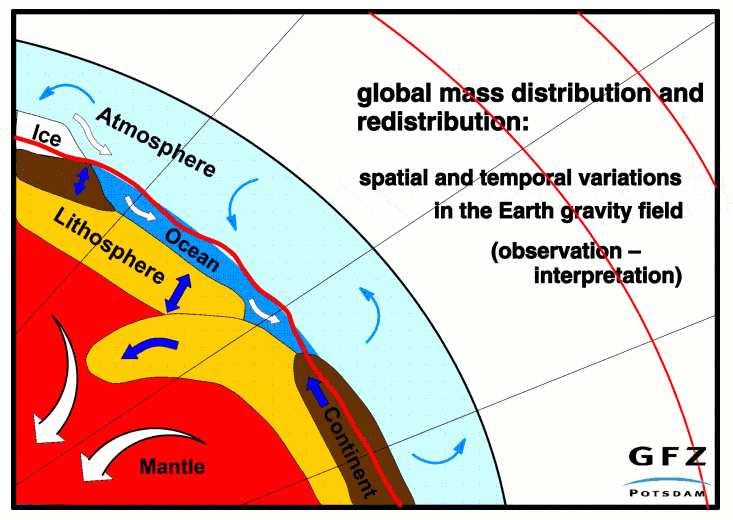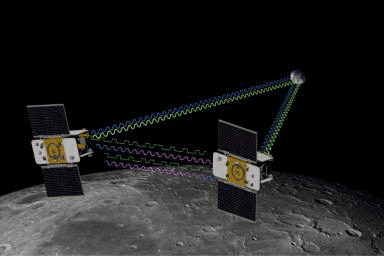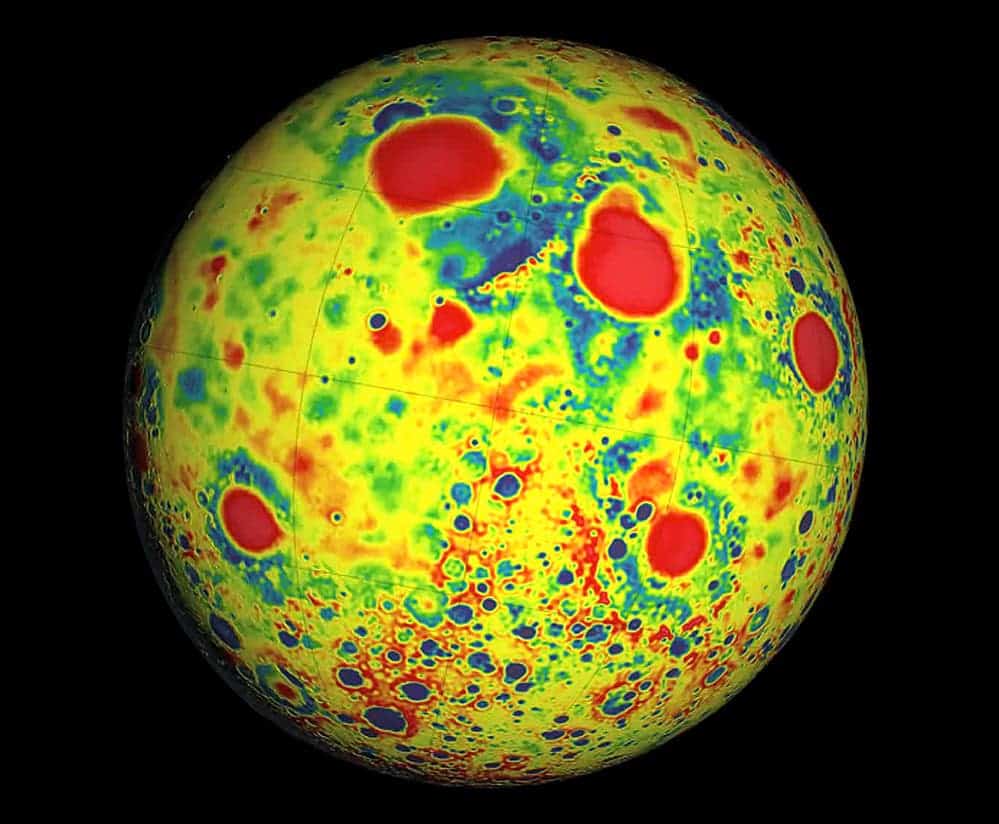NASA’s GRAIL mission had been studying the Moon’s gravitational field for 9 months, with great results – they have discovered the massive regions which cause irregularities in the Moon’s gravitational field, making it uneven.
Planetary gravitational fields
The Earth, the Moon, and pretty much all planets have irregular gravitational field – first of all because they aren’t perfectly spherical, and second of all, due to lateral and/or vertical variations in the subsurface.
The point of planetary gravitational field measurements is to detect anomalous values, which are caused by anomalous distributions of density. Basically what you do is create a gravitational model of the Earth, and every area which has a different value than the model is called an anomaly. Why does this occur?
Well, much like the surface of the Earth isn’t flat, and it has seas and mountains and hills, the limit between the mantle and the crust is also not flat. Whenever the crust is thickened, for example under orogenic belts (let’s say some mountains), you would get a negative gravitational anomaly; why? Because the crust pushes deeper into the mantle, and the crust is not as dense as the mantle. To put it another way, the density of the mountain’s root is smaller than that of the surrounding mantle. Usually, on Earth, major anomalies are negative.
Positive ones tend to be more local, though that’s not always the case. A crust thinning, like for example at a hotspot, will generate a positive gravity anomaly. Smaller features, like ore deposits with a higher density than the surrounding featres will also cause positive anomalies.
The GRAIL mission
As we wrote a few months ago, the GRAIL mission consisted of two satellites, Ebb and Flow, which had the mission to map the Moon’s gravitational field. They were very successful, uncovering the massive invisible regions that make the moon’s gravity uneven, a phenomenon that affects the operations of lunar-orbiting spacecraft. Understanding these findings and putting them into context can not only help future Moon orbiting missions, but missions around other celestial bodies as well.
Ebb and Flow pinpointed the locations of large, dense regions called mass concentrations, or mascons, which are characterized by strong gravitational pull. These surface cannot be detected by other methods, like optical or infra-red cameras.
These areas of positive anomalous values aren’t a result of crust thinning, but rather they are fossil sites of asteroid impact.
“GRAIL data confirm that lunar mascons were generated when large asteroids or comets impacted the ancient moon, when its interior was much hotter than it is now,” said Jay Melosh, a GRAIL co-investigator at Purdue University in West Lafayette, Ind., and lead author of the paper. “We believe the data from GRAIL show how the moon’s light crust and dense mantle combined with the shock of a large impact to create the distinctive pattern of density anomalies that we recognize as mascons.”
If you look at the picture above, you’ll easily notice the patterns that mascons have on gravity maps: they have positive, bulls-eye center, surrounded by a ring of negative values. A ring with a gravity surplus surrounds the bull’s-eye and the inner ring. This is a natural result of crater excavation, collapse and cooling following an impact. The positive “bull’s-eye” is caused by lunar material melted from the heat of a long-ago asteroid impact.
“Knowing about mascons means we finally are beginning to understand the geologic consequences of large impacts,” Melosh said. “Our planet suffered similar impacts in its distant past, and understanding mascons may teach us more about the ancient Earth, perhaps about how plate tectonics got started and what created the first ore deposits.”
Not just the Moon
The Earth is at least partially protected from such impacts thanks to the atmosphere, and since our planet is tectonically active, even if such events would have taken place in the earliest years of our planet, we most likely couldn’t find the signs now.
But mascons have also been identified (or at least theoretized) on other planets, like Mars and Mercury.
“Mascons also have been identified in association with impact basins on Mars and Mercury,” said GRAIL principal investigator Maria Zuber of the Massachusetts Institute of Technology in Cambridge. “Understanding them on the moon tells us how the largest impacts modified early planetary crusts.”
After fulfilling their missions, Ebb and Flow sadly crashed onto the Moon, because this was more economically viable than salvaging them.






